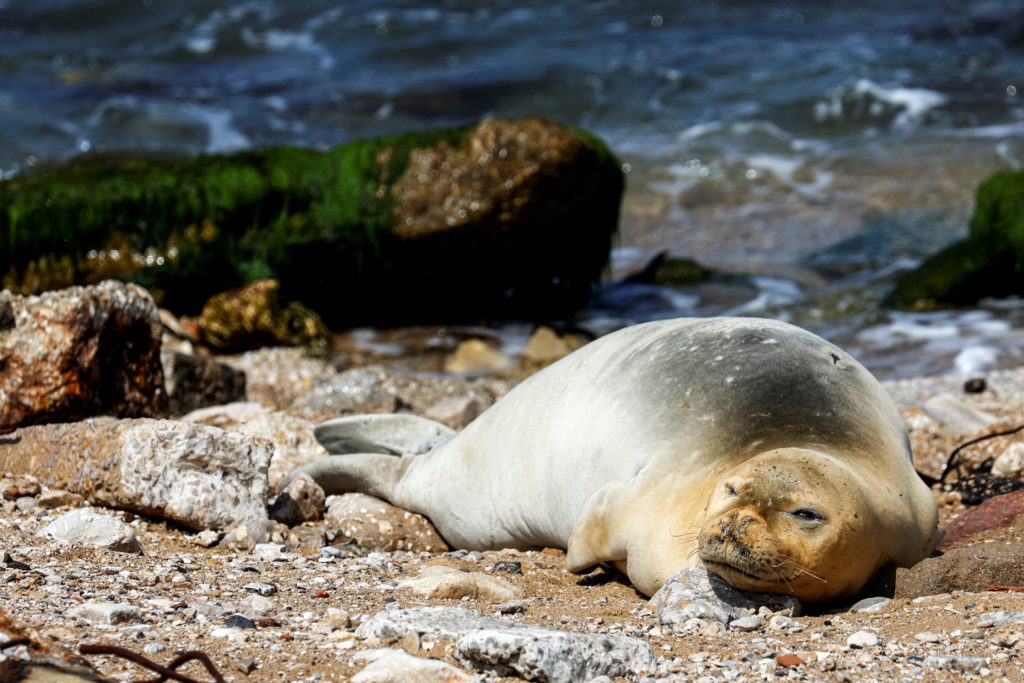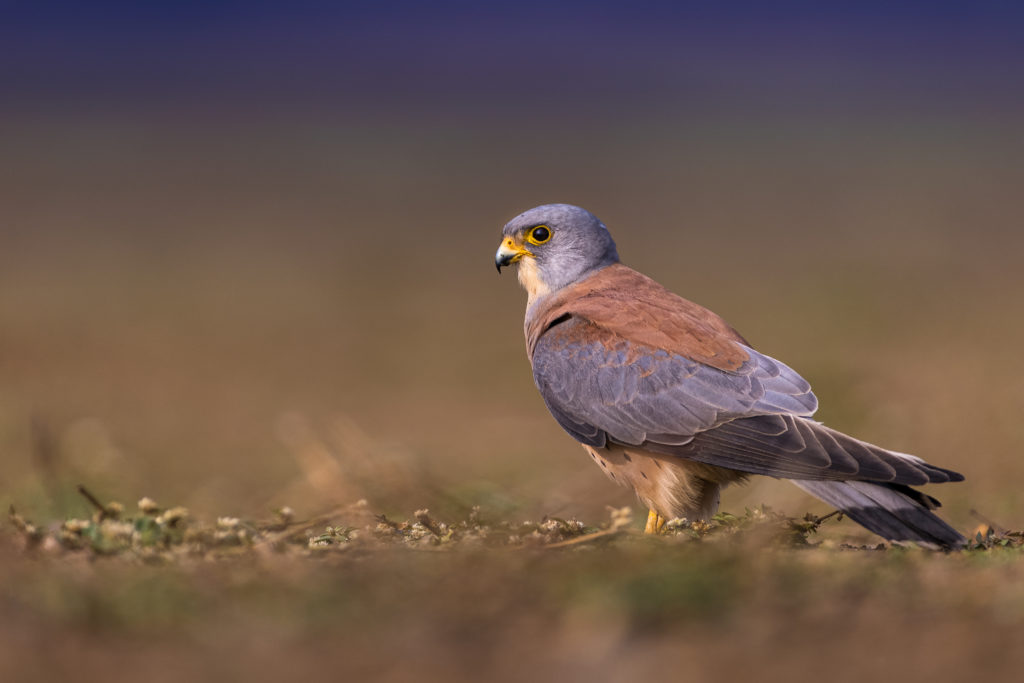Animals that migrate face myriad threats to their survival, all of which have a common denominator: human activity. That’s according to a first-of-its-kind report published Monday by the Convention on the Conservation of Migratory Species of Wild Animals (CMS), a United Nations treaty. More than one in five of the species listed by CMS are threatened with extinction.
Habitat destruction, pollution, unsustainable hunting and fishing, and climate change are among the ways people are disrupting routes migratory species traverse each year. To mitigate these threats, the convention calls for more meaningful action and cooperation across borders and between governments, the private sector and other stakeholders.
WATCH: Why large numbers of reptile species face extinction and what that means for our ecosystem
The unique report comes as no surprise to ecologists who work with migratory animals. Global research efforts are endeavoring to track and map exactly where and when various creatures travel each year, information that can be used to better protect them.

An endangered and rare female Mediterranean monk seal visits the shore of Jaffa in Israel, May 15, 2023. Photo by Amir Cohen/Reuters
That work has a long way to go, though, said Emily Cohen, an animal migration ecologist at the University of Maryland Center for Environmental Science. And it’s happening as these species are actively grappling with modern borders, technologies and industries that jeopardize their migrations and their survival.
“It’s really an exciting time to study migratory animals,” she added. “But at the same time, we’re losing them. They’re blinking out. So it’s timely, but also kind of scary. And this report reflected that.”
The risk of extinction is also mounting for animals that aren’t on the CMS list, according to the report, which noted that between 1970 and 2017, there was a 15 percent average drop in monitored populations of migratory species across the globe.
Grow your mind
Subscribe to our Science Newsletter to explore the wide worlds of science, health and technology.
The convention’s list includes heavily endangered animals and those whose populations require international conservation efforts to address the serious pressures they face, CMS executive secretary Amy Fraenkel said.
“If a species is crossing national borders, it means that one country alone cannot do what it takes to achieve the conservation protections and needs of the species,” Fraenkel said.
Who migrates, and who is under threat?
From whales to wildebeests to warblers, a huge variety of animals cover enormous distances each year in search of certain climatic conditions, or breeding or feeding grounds.

A male Lesser Kestrel is pictured in a grassland in Maharashtra, India, Jan. 10, 2021. Photo via Sumeet Moghe/Wikimedia Commons under a Creative Commons license
Some — like many songbirds — are obligate migrants, meaning they’re hard-wired to make their journeys, which can be spurred by cues like day length, Cohen said.

Climate change and migration mismatch
Food is one of the major reasons that many species migrate. That means they require synchronicity with the seasons to make the most out of their journeys, said Matthew Kauffman of the U.S. Geological Survey.
Mule deer, for example, famously “surf the green wave” when they travel 150 miles between their winter and summer ranges, Kauffman said. Strategically arriving right when “green-up” – or new plant life – returns across the landscape allows these herbivores to take advantage of spring’s best foraging opportunities.
“These animals have an uncanny ability to be exactly in the right place at exactly the right time,” he said, adding that researchers can analyze these movements thanks to a combination of tools like GPS trackers on animals and satellite data on “green-up” events.
But climate change interferes with phenology, or cyclical events in nature that are tied to the seasons. It can throw off the “pace and the pattern of how the forage moves,” Kauffman said. In addition, his research has found energy infrastructure can hold these deer up on their migration routes.
“They’re surfing along the wave, they hit a [patch of energy development] and they hold up [while] trying to figure out how to best get through it,” Kauffman said. “Meanwhile, the [green] wave passes them by and keeps moving up, and then finally, they get through. But then they’re mismatched, and they have to sort of speed up to try to catch back up.”
For other species, migration is a kind of learned cultural practice, said Matthew Kauffman, a wildlife biologist with the U.S. Geological Survey who studies ungulates, or hoofed mammals. He said that young animals absorb a “cultural repository of knowledge” that exists in the population they’re born into by following the leads of other animals.
Mammals, birds, reptiles, insects and fish are among the types of animals that CMS covered in its report.
READ MORE: How climate change is throwing off key timing for wildflowers and trees in spring
One section of the research lists 180 heavily endangered migratory animals that international law bans from being killed or taken into captivity. The report found that more than 80 percent of these species face the threat of extinction. Some groups face starker realities than others; more than two-thirds of reptile species and nearly all fish species listed by CMS are threatened with extinction.
Why migratory species matter
The argument to protect migratory species is not just environmental, but cultural and economic, too. People and ecosystems across the globe rely on these creatures in a wide range of important ways.
The report points out that many groups of people have strong cultural or spiritual ties with migrators. Cohen noted that annual sightings of animals like songbirds that traverse continents on their migration journeys offer an opportunity to be inspired by and connect with those animals.

A man releases a Green turtle into the sea at the Sea Turtle Conservation Center of the Royal Thai Navy, in Sattahip, Chonburi province, east of Bangkok, Aug. 1, 2012. Photo by Chaiwat Subprasom/Reuters
Threatened or dwindling populations of migratory species can have ripple effects across ecosystems. Pollinators play a key role in transporting seeds, for example, while other animals help transfer nutrients across land and sea.
Whales fall into the latter category. When they migrate from polar waters toward the equator, they help move nutrients to parts of the ocean that typically don’t have a lot to spare, said Daniel Costa, director of the Institute of Marine Sciences at the University of California, Santa Cruz. As they travel, whales release urea as waste, a source of nitrogen that’s useful to other members of the marine ecosystem.
READ MORE: These pansies are evolving to rely less on pollinators. Here’s why that may spell trouble
The report also noted that some communities derive economic value from migratory species thanks to the ecotourism industry, or rely on these animals as food sources.
What interventions would help these animals?
Migratory species face multiple challenges, and addressing them requires multifaceted solutions. The loss of habitat and overexploitation from hunting and fishing are two of the most pressing threats, according to the report.
Human activities and structures can obstruct migration routes, making it difficult or even impossible for animals to embark on their journeys. Pollution — including light and noise pollution, plus contaminants like pesticides and plastics — is another major problem, too.

A whale shark swims next to volunteer divers after they removed abandoned fishing net that was covering a coral reef in a protected area of Ko Losin, Thailand, June 19, 2021. Photo by Jorge Silva/Reuters
In the report, overexploitation encompasses both intentional and accidental harvesting of species for sale as food, pets or products. Many marine migrators are at particular risk of ending up as bycatch, or animals harvested by people that intended to catch different species.

How you can help
Understanding where and when animals migrate is key to identifying how to protect them.
But a dearth of data on that topic can compound other challenges, like coordinating conservation across multiple countries, said Amanda Rodewald at the Cornell Lab of Ornithology, who pointed out that those data obstacles are noted in the report.
The good news is that researchers have an unprecedented number of “tools and technologies” available to monitor populations and identify habitats and times of year that are most important for them, Rodewald noted. There are opportunities for concerned citizens to get involved, too.
eBird is a citizen science tool that amateur ornithologists can use to document the species they see in the wild. More than 1.5 billion observations from across the globe have been recorded on the platform thus far, information that Rodewald said “comprises about half of all of the data in the Global Biodiversity Information Facility.”
Using all of these tools to fill information gaps can help ensure that conservation efforts are maximally focused and strategic, Rodewald said.
Recommended interventions involve addressing the damage caused by humans, such as by identifying, protecting, restoring and monitoring key habitats to help decrease disruption to migration routes. The convention also calls for collaborations between stakeholders to combat overfishing and bycatch, in addition to illegal hunting, as solutions to overexploitation.
WATCH: Nature knows no borders. Border security can take a heavy toll on endangered wildlife
Achieving these goals requires a shift in perspective, said Amanda Rodewald, senior director of the Center for Avian Population Studies at the Cornell Lab of Ornithology. She added that healthy environments are crucial to the health of both people and animals.
“There’s growing recognition that many of the same steps we need to take to protect migratory species, as well as biodiversity more generally — those are the same steps we need to take to protect human health and well-being,” Rodewald said.
That means the solutions available to address challenges like climate change — such as bolstering green spaces in urban environments — can have multi-fold benefits across species, including ours, she noted.
Fraenkel also pointed out a more philosophical reason to protect migratory species, noting that animals like dolphins and elephants, for example, have complex social structures and are exceptionally intelligent. Upholding the ways that these creatures connect people and countries, she said, “is a way of thinking about nature.”
“I think that’s very helpful to realize that it is still one planet, and it means that we have to work together across country lines and make sure that we’re all doing what we can to see that nature continues to thrive,” Fraenkel said.
ncG1vNJzZmivp6x7sa7SZ6arn1%2Bjsri%2Fx6isq2ejmLamusKeZqWZnpm6or7KZqmeqJ%2BnwW6wxK2YoqSjYrWww4yhrKaZnmKupMDIr6CtoZWoeqStzWaboquiqr21ecCnoKaZnGK6qrPRmquip56o